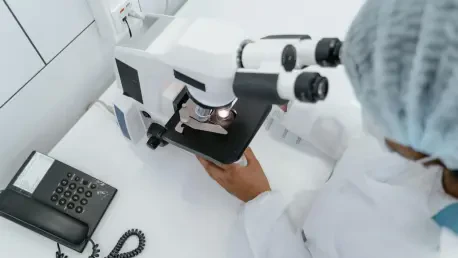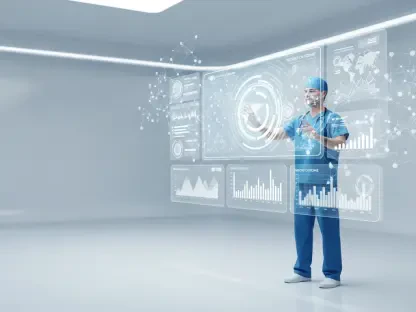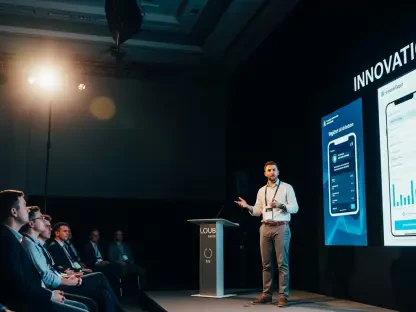What if the secret to transforming patient care and easing the burden on healthcare workers rested in a single, visionary initiative? Picture a system where nurses save hours on paperwork, doctors connect more deeply with patients, and cutting-edge technology solves real-world problems. Ascension, a leading nonprofit health system, has launched an ambitious endeavor to make this vision a reality through its Clinical Innovation Institute (CII). This bold step promises to redefine healthcare delivery by accelerating innovation across its vast network, addressing some of the industry’s most pressing challenges with precision and purpose.
The significance of this development cannot be overstated. With healthcare systems grappling with systemic inefficiencies and overwhelmed staff, Ascension’s initiative stands as a beacon of hope. The CII consolidates existing efforts and introduces fresh strategies under a unified framework, aiming to drive meaningful progress at an unprecedented pace. Led by Chief Clinical Officer Thomas Aloia, M.D., this institute is not just about adopting new tools—it’s about aligning innovation with a mission to serve the vulnerable while enhancing outcomes for all.
Why Healthcare Innovation Is Critical Today
The healthcare sector faces a crisis of efficiency, with clinicians often bogged down by administrative tasks that steal time from patient care. Studies reveal that nurses can spend up to 35% of their shifts on documentation alone, a staggering drain on resources when patient needs are urgent. Ascension recognizes this as a fundamental barrier to its Catholic mission of compassion and service, particularly for underserved communities. The launch of the CII marks a direct response to these systemic issues, prioritizing solutions that restore focus to caregiving.
Beyond paperwork, the emotional toll on healthcare workers is palpable, with burnout rates soaring as high as 50% among some specialties. The institute aims to tackle this by integrating technology and processes that lighten workloads and foster a renewed sense of purpose among staff. By addressing these dual challenges—operational bottlenecks and staff well-being—the CII positions itself as a catalyst for change in an industry desperate for relief.
This urgency underscores a broader trend: innovation is no longer optional but essential for survival in healthcare. Ascension’s commitment to leading this charge through a structured, mission-driven approach sets a powerful example. The institute’s focus on tangible impact over flashy trends offers a refreshing perspective, promising to reshape how care is delivered across diverse communities.
Addressing Systemic Gaps in Care Delivery
Healthcare delivery today struggles with deep-rooted obstacles, from overworked teams to fragmented communication between departments. These inefficiencies often result in delayed treatments and frustrated patients, with one report indicating that 30% of hospital readmissions stem from poor coordination. Ascension identifies these gaps as critical threats to quality care, especially for vulnerable populations who rely on accessible, timely interventions.
The CII emerges as a strategic countermeasure, designed to streamline workflows and enhance patient experiences through targeted advancements. Unlike generic tech rollouts, this initiative prioritizes solutions tailored to real needs, ensuring that every innovation directly addresses pain points felt by both staff and those they serve. This alignment with practical outcomes reflects a deliberate shift toward sustainable progress over temporary fixes.
Moreover, the institute seeks to bridge the divide between technology and human connection, a balance often lost in modern healthcare. By reducing administrative burdens, the goal is to give clinicians more moments for meaningful interactions with patients. Such a focus could redefine trust and satisfaction in medical settings, setting a new standard for what compassionate care looks like in practice.
Inside the Four Core Pillars of Progress
The Clinical Innovation Institute rests on a robust foundation of four distinct areas, each targeting a unique facet of healthcare improvement. The clinical transformation team leads with modern care delivery methods, including virtual consultations, continuous patient monitoring, and behavioral campaigns that nudge individuals toward healthier choices. These efforts aim to make care more accessible and proactive, especially for those in remote or underserved areas.
Another pillar focuses on electronic health record (EHR) innovations, harnessing tools like artificial intelligence (AI) and predictive analytics to slash administrative time. A pilot program using AI to draft care summaries has already proven its worth, saving nurses up to 90 minutes per shift—time redirected to bedside care. This demonstrates how technology, when applied thoughtfully, can amplify a clinician’s impact without overwhelming their daily routines.
The remaining pillars emphasize research integration and frontline creativity. With over 6,000 clinical trial participants and nearly 1,000 trainees engaged annually, the research and education arm drives medical advancements and prepares future leaders. Meanwhile, the innovation incubator empowers staff to propose and scale grassroots solutions, ensuring ideas born from direct experience shape system-wide change. Together, these components form a comprehensive blueprint for elevating care across Ascension’s network.
Leadership Insights and Staff Perspectives
At the helm of the CII, Chief Clinical Officer Thomas Aloia, M.D., brings a grounded vision to the initiative. “Innovation must serve a purpose beyond novelty—it has to improve lives for patients and ease burdens for staff,” he asserts. His emphasis on practicality resonates with nursing teams who have already contributed bedside solutions and express genuine enthusiasm for being part of this transformation. Their input is seen as vital to ensuring relevance in every adopted tool or process.
Aloia also highlights the institute’s role as a gatekeeper for external technology proposals, a function that shields staff from the constant barrage of vendor pitches. Supported by a $20 million budget and over 100 dedicated personnel, the CII has the resources to rigorously vet solutions, implementing only those with proven value. This protective layer not only reduces stress but also builds trust among employees who see their needs prioritized.
Drawing inspiration from other top-tier health systems, Ascension has tailored the CII to fit its unique ethos while adopting best practices. This balance of external learning and internal mission alignment strengthens the institute’s credibility. Staff at all levels, from clinicians to administrators, report a growing sense of collaboration, fueled by the knowledge that their voices directly influence the future of care delivery.
Lessons for Broader Healthcare Transformation
For other health systems aiming to mirror Ascension’s approach, the CII offers a clear set of strategies to emulate. First, innovations should always tie back to core values and measurable results, avoiding the trap of chasing trends for their own sake. This ensures that every effort addresses authentic challenges rather than superficial goals, creating lasting impact for patients and providers alike.
Engaging frontline workers is another critical takeaway, as their firsthand insights often uncover the most effective fixes. Establishing platforms for doctors, nurses, and support staff to test and refine ideas fosters ownership and drives adoption of new practices. Additionally, creating a centralized evaluation hub for external technologies can prevent staff overwhelm, ensuring only impactful tools reach implementation stages.
Investing in dedicated resources and specialized leadership also proves essential, as seen in Ascension’s four-pillar structure guided by expert directors. This model of focused oversight, paired with substantial funding, provides a roadmap for balancing innovation with practicality. Health systems adopting these principles could see similar gains in efficiency and morale, potentially reshaping care delivery on a national scale.
Reflecting on a Bold Step Forward
Looking back, Ascension’s launch of the Clinical Innovation Institute stood as a pivotal moment in addressing healthcare’s deepest challenges. It tackled inefficiencies head-on, empowered staff with actionable tools, and placed patient well-being at the forefront of every decision. The institute’s mission-driven focus ensured that technology served humanity rather than overshadowed it, a lesson etched into every initiative.
As the healthcare landscape continued to evolve, the next steps hinged on scaling these innovations beyond Ascension’s network. Other systems were encouraged to adapt similar frameworks, prioritizing frontline input and rigorous evaluation of new tools. Collaboration across organizations could amplify these efforts, creating a ripple effect of improved care and renewed purpose for workers everywhere.
Ultimately, the journey sparked by this initiative pointed toward a future where innovation and compassion walked hand in hand. Health systems were urged to invest in structured, value-aligned strategies that addressed real needs. By doing so, the industry could move closer to a reality where every patient received timely, heartfelt care, and every clinician found fulfillment in their vital work.









